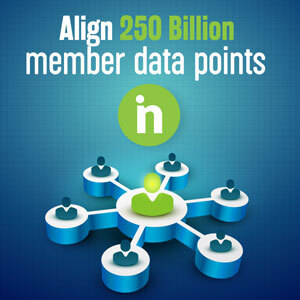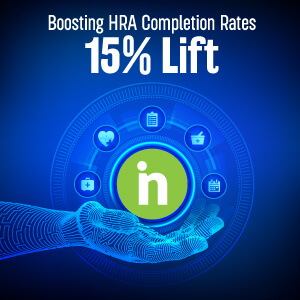Avoiding Onboarding Pitfalls: Identifying Common Member Pain Points
Despite their best-laid plans, many health plans unintentionally create barriers for members during member onboarding. These challenges, often stemming from outdated practices or fragmented systems, can alienate members and jeopardize their trust in the plan.
This topic was discussed during a recent webinar, “Mastering the First 90 Days: Transform Member Experience When It Matters Most.” Justin Skerbetz, Head of Marketing & Sales at Insightin Health, hosted the session, which brought together a distinguished panel of experts to explore how health plans can optimize the onboarding process.
Panelists included:
- Ashley Conger, Founder of Merit Create
- Andrew Bell, Medicare Stars Expert at ProspHire
- Joe Pulice, Global Payer Lead at Salesforce
The webinar offered actionable insights into enhancing member experiences, improving retention, and effectively leveraging technology. This blog post is the first of three exploring the member onboarding experience.
Below, we unpack the key takeaways and strategies discussed by the panel regarding common onboarding pain points.
Information Overload
New members often receive a barrage of communications upon enrollment, from ID cards and handbooks to benefit summaries and health risk assessments. While this information is essential, the sheer volume can be overwhelming. Members are expected to sift through dense materials, interpret complex benefit details, and make sense of calls to action—often without prior guidance or context.
For example, Justin shared the story of Tom, a patient overwhelmed by the sheer volume of materials sent to him as part of his health plan’s onboarding process. Tom admitted he didn’t engage with any materials sent to him because they felt impersonal and excessive. For Tom, this flood of information created paralysis instead of clarity.
This phenomenon is not unique to Tom. Many members, particularly those unfamiliar with navigating healthcare systems, struggle to process the influx of communications. Rather than engaging with the plan, they may choose to disengage altogether, creating a domino effect that impacts their satisfaction and retention.
This anecdote underscores the need for health plans to streamline their communications and focus on what matters most to members.
When polled, webinar attendees indicated less than 25% of their members engaged with the health plan within the first 90 days. This is a missed opportunity for patients and health plans. When patients engage early, there are major benefits, including:
- An increase in the utilization of preventative services
- A reduction in medical costs
- Plus, a reduction in voluntary disenrollment
Fragmented and Siloed Communications
Health plans often rely on multiple departments and external partners to deliver services, resulting in disjointed communications. Members receive overlapping, conflicting, or poorly timed messages from different teams, such as:
- A welcome letter from the enrollment department.
- Separate instructions for accessing digital portals.
- Outreach from pharmacy benefit managers or rewards programs.
These silos are rarely visible to members, who view the health plan as a single entity. When they encounter inconsistencies or redundancies, it can lead to confusion and frustration.
For example, a member of a nationally known health plan received a letter from the health plan informing them that they did not have a primary care provider identified. The letter asked the patient to log into their portal and update their records.
The issue: the patient had not received their insurance card or initial welcome kit. They couldn’t sign into the portal because they lacked all the necessary information to complete the sign-up requirements.
Without coordination, these efforts can feel chaotic rather than supportive.
Panelist Joe Pulice noted that members often experience “point solution hell,” where disconnected systems and teams fail to deliver a cohesive experience. This lack of alignment erodes trust and amplifies frustration, especially for members seeking clarity during a stressful period.
Lack of Personalization
Members increasingly expect personalized experiences from their health plans, as they get from their other service providers. However, many onboarding processes remain generic, failing to account for individual member needs, preferences, or circumstances.
For instance:
- A senior member with limited digital literacy may struggle to navigate an online portal or understand automated communications.
- A Medicaid enrollee facing financial or housing instability may prioritize immediate assistance over long-term engagement tasks like completing forms.
- A working professional may prefer text updates and streamlined processes that align with their busy schedule.
Panelist Ashley Conger emphasized the importance of tailoring communications to meet members where they are—both physically and emotionally. She described many members as fragile, dealing with not just medical issues but also social, financial, and environmental stressors. Sending a barrage of generic messages to these individuals without understanding their unique challenges only widens the gap between the plan and the member.
Accessibility Barriers
Accessibility is another critical challenge for many members, particularly those with disabilities or limited English proficiency. Health plans often fail to provide materials in formats that are easy to understand or access, such as:
- Translations in multiple languages.
- Large-print or audio formats for members with visual impairments.
- Simplified language reduces healthcare jargon.
Panelist Andrew Bell highlighted how accessibility gaps can disproportionately impact vulnerable populations, reducing their ability to engage with their health plan and access necessary care. These barriers sometimes lead to noncompliance with regulatory standards, further complicating the member experience.
Overly Complex Digital Tools
While digital solutions like member portals and mobile apps have become the norm, their design and functionality often leave much to be desired. Members frequently encounter:
- Multiple login steps, including two-factor authentication, that discourage use.
- Cluttered interfaces make it hard to find basic information, such as coverage details or claims history.
- Poor integration with other systems, requiring members to repeat tasks or provide information they’ve already shared.
Justin recounted his experience navigating a health plan’s portal, describing the process as exhausting and frustrating. When he located the needed information, he lost interest in engaging further. These obstacles can be even more discouraging for members less familiar with digital tools.
Regulatory and Compliance Challenges
In heavily regulated industries like healthcare, compliance requirements often dictate the content and frequency of communications. While these requirements are necessary, they can result in rigid, impersonal messaging that fails to resonate with members. Joe Pulice shared how his team at Molina Healthcare initially avoided certain updates due to perceived compliance restrictions. However, after re-examining the regulations, they discovered opportunities to simplify processes without violating rules.
Health plans can create informative and engaging communications by rethinking compliance as an enabler rather than a barrier.
The Cost of These Pain Points
Each challenge—whether information overload, fragmented communications, or accessibility barriers—comes with significant costs. For members, these pain points create confusion, disengagement, and dissatisfaction. For health plans, they result in increased member churn, higher operational costs (e.g., customer service calls), and lower satisfaction scores.
Addressing these issues during the first 90 days is not just an opportunity but a necessity. By identifying and resolving pain points early, health plans can create a smoother onboarding process, foster trust, and lay the foundation for long-term loyalty.
Want to learn more? Listen to the entire webinar here.
Want to know the secret to kick-starting your 90-day member engagement transformation? Let’s talk.






